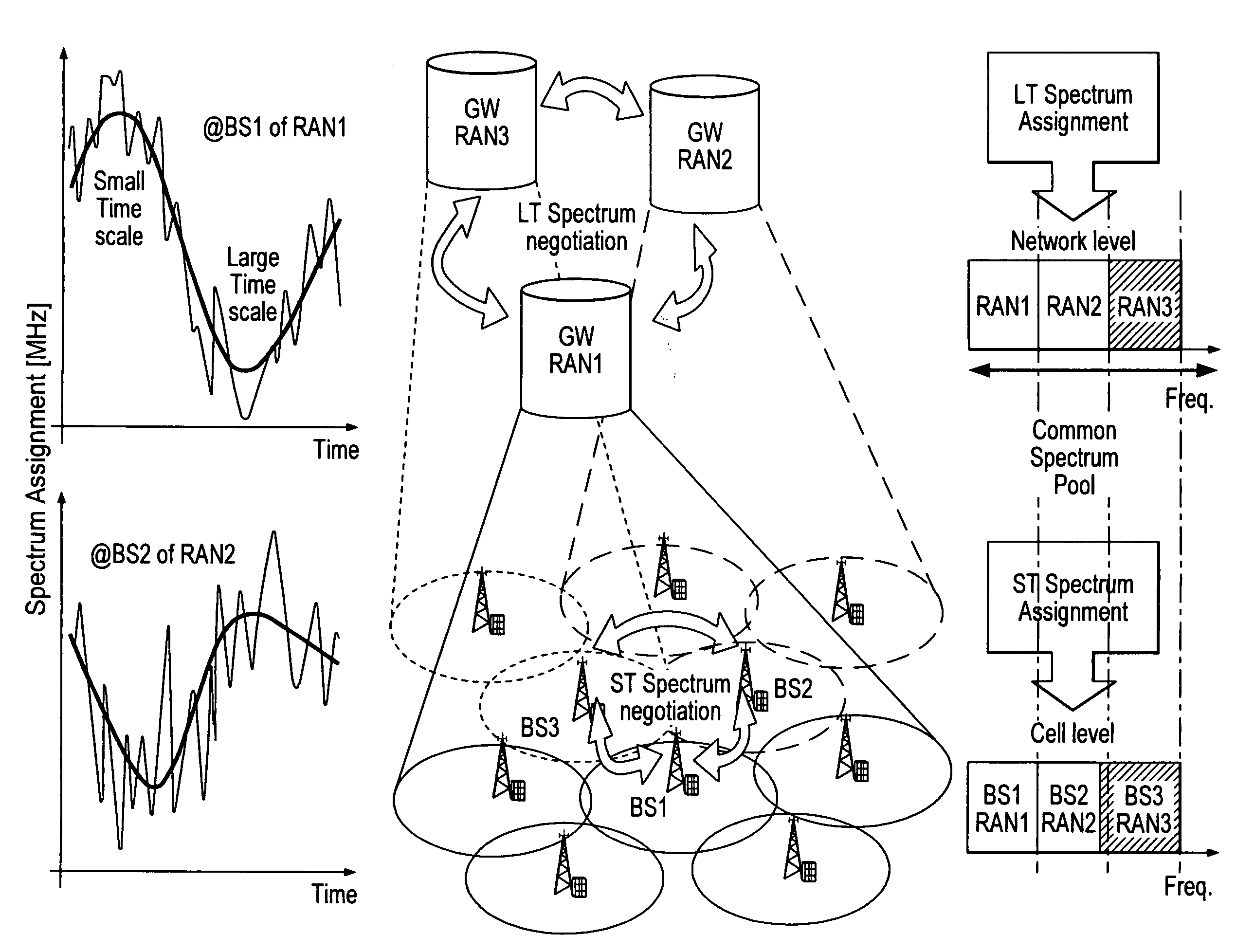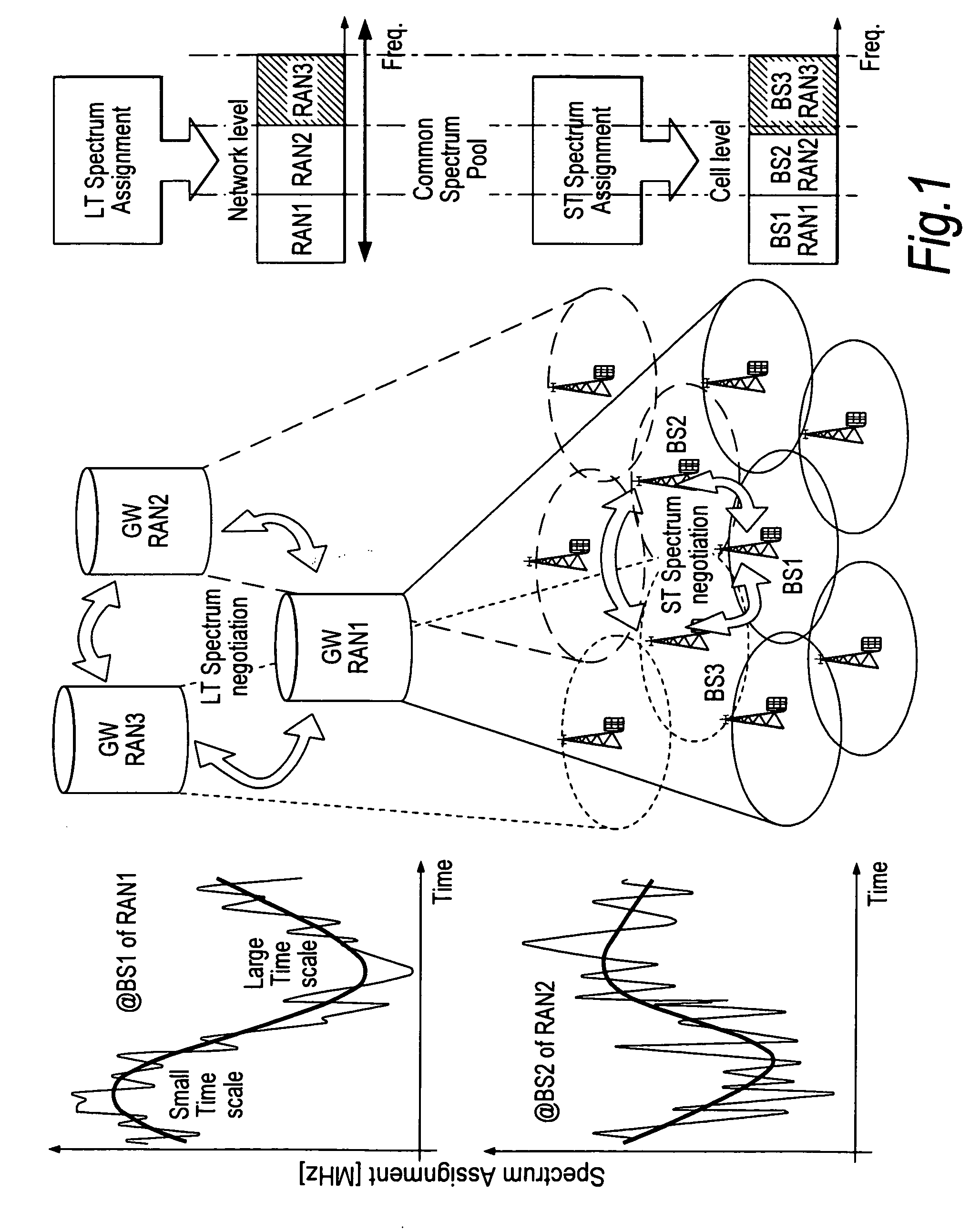Communication systems
a communication system and communication technology, applied in the field of communication systems, can solve the problems of affecting the level of interference, affecting and radio transmissions occupying the same parts of the shared communication spectrum can interfere with each other, so as to improve the chance of reducing the overall interference to a non-critical or “cold” level
- Summary
- Abstract
- Description
- Claims
- Application Information
AI Technical Summary
Benefits of technology
Problems solved by technology
Method used
Image
Examples
Embodiment Construction
[0101]Efficient interference control in a modern wireless network is a key enabling technology contributing to a better QoS across the network. Distributed interference control and distributed dynamic channel allocation in a radio network has certain advantages when compared to a centralized approach including a lower delay, no need for an expensive higher and central decision making entity, and eliminating extra expensive signalling overhead from low layer radio entities to higher decision maker entities. The problem with a distributed approach is that in highly loaded scenarios, when traffic demand is high across the radio network, many conflicts of interest are inevitable, as the distributed entities make sub-channel allocation decisions without necessarily being aware of the decisions being made by other radio entities. As a result, some radio sub-channels may become overloaded and suffer from severe interference and drop of packet data, leading to an unacceptable QoS for the wi...
PUM
 Login to View More
Login to View More Abstract
Description
Claims
Application Information
 Login to View More
Login to View More - R&D
- Intellectual Property
- Life Sciences
- Materials
- Tech Scout
- Unparalleled Data Quality
- Higher Quality Content
- 60% Fewer Hallucinations
Browse by: Latest US Patents, China's latest patents, Technical Efficacy Thesaurus, Application Domain, Technology Topic, Popular Technical Reports.
© 2025 PatSnap. All rights reserved.Legal|Privacy policy|Modern Slavery Act Transparency Statement|Sitemap|About US| Contact US: help@patsnap.com



